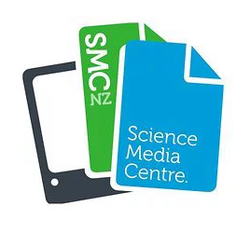New Zealand’s new mining strategy has a goal of doubling the value of our mineral exports by 2035.
The announcement also included the release of the final critical minerals list with 37 minerals including gold and coal.
The Science Media Centre asked experts to comment.
Professor JR Rowland, University of Auckland, Regional Vice-President Society of Economic Geologists, comments:
“This strategy gets a big tick from me because it’s not just about drill baby drill. It is a well-considered whole value chain strategy underpinned by guiding principles that may surprise some given rhetoric in the run-up to its delivery.
“I like the emphasis on research and pipe-line development, which has taken a hit over the last 10 years, and the recognition that mineral exploration and services technologies are key to success.
“If we are going to shift the dial on mineral extraction to include critical minerals and sustainable practice, we need to shift to nose-to-tail extraction (eat the whole pig, not just the fillet). This strategy recognises the importance of mine waste and recycling as alternative forms of ‘ore’. There’s much to be done on the research side to enable nose-to-tail extraction, so investment will be key.
“It makes sense to include gold on the critical minerals list. It is the value proposition that will enable extraction of associated critical elements if we get nose-to-tail mining right. It is also the fastest track to regional wealth creation over the duration of the strategy. And, we do gold mining very well by global standards.
“There’s an increasing allergy to coal in metallurgy, so despite the economic imperatives, I can’t see it staying on the list across successive governments.”
No conflicts of interest.
Dr Hamish Rennie, Associate Professor of Planning and Environmental Management, Lincoln University, comments:
“It’s great to see the Minister recognises both the importance of the environment and the interests of tangata whenua in his forward to the Minerals Strategy. Mining is an important contributor to the global economy, and to the transition to a sustainable future. There have been significant advances in rehabilitation of mining sites and mining has significantly contributed to our heritage tourism industry (e.g. the Otago Goldfields).
“But, it’s really important that the regulatory environment is robust and can ensure that the footprint from mining is indeed “light”. The drive for efficient consenting processes cannot be at the expense of effective protection for the environment, tangata whenua interests, highly productive land and the wellbeing of communities.
“To achieve the Minister’s goal of a light environmental footprint he may need heavy handed regulation. That might be incompatible with the proposed Regulatory Standards Bill and proposed fast track consenting legislation.”
No conflicts of interest.
Dr Martin Brook, Professor of Applied Geology, University of Auckland, comments:
“Our way of life and average life expectancy are underpinned by what we, as the human race, produce from minerals (and crude oil). The vast majority of our products are derived from minerals overseas, our expectation being that other countries should dig up their minerals to provide us with technology, electricity and materials we demand. In NZ, we then claim to be “clean and green”. Given this context, Shane Jones’ speech launching the new minerals strategy and critical minerals list in the core shed of OceanaGold’s Waihi mine was bombastic.
“However, scratching beneath and beyond the rhetoric, and talking to mine engineers from overseas who also attended the launch, there is much to be positive about. Indeed, while NZ sits astride a plate boundary, putting us at risk of earthquakes, volcanic eruptions and tsunami, plate tectonics also blesses us with a rich mineral wealth, much of which is outlined in the critical minerals list.
“As I heard from overseas visitors, NZ is a parliamentary democracy, has a respected court system, and quality universities. If any country globally can extract minerals effectively with as little environmental footprint as possible, it is NZ. Mines take up tiny footprints, compared with the 1.6 million hectares of NZ natural habitat currently destroyed by exotic radiata pine plantations. Mining jobs are very well paid and require a range of skillsets, providing opportunities from administration, finance, to heavy vehicle engineering, environmental science, and geology etc.
“We have an opportunity now to reap the economic benefits and slow the rate of young, skilled people crossing the ditch. I welcome the government’s attempt to promote mining opportunities. We can feed more minerals into global supply chains, rather than our arrogant attitudes toward other countries, many of whom are undergoing civil wars over conflict minerals.”
Conflict of interest statement: “I used to work overseas in mining in Australia until 2015; I don’t have any current relationships with mining companies; I have received funding from RSNZ and MBIE regarding toxic minerals.”
Dr. Phaedra Upton, Land and Marine Geoscience Theme Leader, GNS Science, comments:
“GNS Science welcomes the Government’s announcement confirming a Critical Minerals List for New Zealand. Establishing this list aligns New Zealand with other advanced economies and provides a framework for identifying the minerals essential to securing a sustainable energy future.”We are particularly pleased to see the inclusion of aggregates as a critical mineral. Our recent work with the New Zealand Infrastructure Commission has highlighted the importance of efficiently managing aggregate resources to support infrastructure development while minimizing extraction and transport costs.
“As you will see in our submission on the MBIE website, we recommended the exclusion of coal from the list, which would align us with Australia’s list and our Government’s commitment to achieving net-zero carbon emissions by 2050.
“GNS Science remains committed to working alongside MBIE and industry to explore commercial opportunities that support mineral exploration and development for the energy transition. Through Government-funded research, where available, we will investigate minerals essential for the energy transition and assess supply security for New Zealand.”
No conflicts of interest.




 Parrot Analytics: Netflix Earnings - Price Hikes With Minimal Churn | Will Netflix Be A Bright Spot For Markets?
Parrot Analytics: Netflix Earnings - Price Hikes With Minimal Churn | Will Netflix Be A Bright Spot For Markets? Canterbury Museum: Mystery Molars Lead To Discovery Of Giant Crayfish In Ancient Aotearoa New Zealand
Canterbury Museum: Mystery Molars Lead To Discovery Of Giant Crayfish In Ancient Aotearoa New Zealand Ngā Pae o te Māramatanga: Māori Concerns About Misuse Of Facial Recognition Technology Highlighted In Science
Ngā Pae o te Māramatanga: Māori Concerns About Misuse Of Facial Recognition Technology Highlighted In Science Retail NZ: Retailers Call For Flexibility On Easter Trading Hours
Retail NZ: Retailers Call For Flexibility On Easter Trading Hours WorkSafe NZ: Worker’s Six-Metre Fall Prompts Industry Call-Out
WorkSafe NZ: Worker’s Six-Metre Fall Prompts Industry Call-Out PSGR: Has MBIE Short-Circuited Good Process In Recent Government Reforms?
PSGR: Has MBIE Short-Circuited Good Process In Recent Government Reforms?



